Before we dive headfirst into the real meat of this article, let’s first begin with a bit of background regarding the crimes of burglary and robbery. Otherwise, some of you who use social media sites and/or watching TV news and crime dramas as your main sources of research, may not know that burglary and robbery are not the same. Not even close.
I know, we’ve discussed this topic in the past, in great detail, but sometimes we forget.
Just today, if fact, a major news source published an article titled “British Olympian says medals were stolen from her home in robbery.”
I read the article thinking I’d see where the unfortunate female athlete was held up at gunpoint in her own home while the armed and dangerous bad guys forcibly snatched her precious awards and other items. This would’ve been a robbery. However, it was not a robbery.
The first paragraph tells readers that the distance runner received the news that her home had been ransacked while she was away. The family member who discovered the mess had gone to the house to check on the Olympian’s dog. This act was a burglary.
See the difference between the two crimes? This is yet another example of how the media so often gets it wrong?
So let’s again clear the air about the differences between the two crimes.
Burglary as defined by Black’s Law Dictionary: “The breaking and entering the house of another in the night-time, with intent to commit a felony therein, whether the felony be actually committed or not.”
In Virginia, where I served as law enforcement officer/investigator, the law governing burglary there in the Commonwealth, states:
§ 18.2-89. Burglary; how punished.
VA Code § 18.2-91
If any person commits any of the acts mentioned in § 18.2-90 with intent to commit larceny, or any felony other than murder, rape, robbery or arson in violation of §§ 18.2-77, 18.2-79 or § 18.2-80, or if any person commits any of the acts mentioned in § 18.2-89 or § 18.2-90 with intent to commit assault and battery, he shall be guilty of statutory burglary, punishable by confinement in a state correctional facility for not less than one or more than twenty years or, in the discretion of the jury or the court trying the case without a jury, be confined in jail for a period not exceeding twelve months or fined not more than $2,500, either or both. However, if the person was armed with a deadly weapon at the time of such entry, he shall be guilty of a Class 2 felony.
§ 18.2-92. Breaking and entering dwelling house with intent to commit other misdemeanor.
Clear as mud, right?
Notice that I highlighted a brief portion of a sentence in red, and three specific words in blue—“with intent to commit larceny or any felony other than murder, rape, robbery or arson …” I did so to emphasize that robbery is not a portion of, or related to the basic crime of burglary. It is a separate offense.
Burglary and Robbery are not the same!
Okay, still confused when I say that robbery and burglary are not the same crime? You ask, how could this be the case when sooooooooo many TV news reports and fictional television shows time and time again tell us that “Ms. or Mr. Crime Victim’s” house was robbed?
Sit back and clear your mind for a second.
We learned just a few lines back that burglary involves the breaking and entering the house of another, and only a burglar, or burglars, are involved. No forcible taking an item or items from a victim.
Now, on to robbery.
Black’s Law definition of robbery.
“Robbery is the felonious taking of personal property In the possession of another, from his person or immediate presence, and against his will, accomplished by means of force or fear. Pen. Code Cal.”
Traveling back to Virginia, we see that robbery there is:
A burglary, however, occurs only at a building and the victims are typically not present when the crime occurs. If so, they’re usually unaware that their homes have been burgled until after the bad guy is gone. For example, you and your spouse are out for the evening when Joe I. Stealem goes inside your home and swipes a carton of orange juice from your refrigerator. That’s burglary.
However, suppose you and your spouse are walking home from the corner market. You’re clutching a bag containing the carton of orange juice you’d just purchased. As you round the final corner, Ricky Robber approaches and points a gun at you, demanding that you hand over the juice. You comply and Ricky runs away. That’s a robbery because Ricky Robber used threat, fear, and/or intimidation to force you to hand over the orange squeezings.
Most Crime is Not Rocket Science
I believe most of us would agree that many everyday street-type criminals lead somewhat unorganized lives. And, typically, many are not well-educated, their family lives are atypical at best, they couldn’t find work if they wanted to due to low or nonexistent skill levels and/or little or no work history, and they’re often substance abusers who go about their day-to-day activities, labors that consist mainly of planning their next caper, one that’ll reap whatever reward that will get them high once again. Others live in poverty and it is crime that serves to place meager amounts of food into the bellies of their family members. After all, desperate people sometimes do desperate things.
Of course, some types of crime involves a higher level of intelligence, brainpower that generates intricate, detailed planning and execution (no gory pun intended).
Now, let’s head back to the beginning paragraphs of this article, the bits about burglary. This particular crime is typically committed by both types of crook—the chaotic criminal who kicks in the nearest backdoor to steal whatever nets enough cash to get by until the next day, or until he stumbles across an unlocked window to make a quick grab of a purse seen sitting on a chair-side table.
Next, there’s the expert burglar who plans his crime in advance, perhaps by conducting surveillance for days or weeks prior to committing the actual offense. They’re after the big payoff. The real loot.
The expert crook knows what he’s after long before he enters someone’s property, and he’s pretty sure he knows where it be located and what time is best to make his move. This burglar also has backup plans in the event something doesn’t go quite as they’d expected, as well as pre-planned escape routes and methods to get away. And, most likely, he knows his customer base well in advance (who will purchase the stolen items).
The professional thief practices his craft much like the police academy recruit, by repetition. He trains over and over again so that when the time comes, if it does, that he encounters trouble he will react instinctively to the hurdle before him. They rarely leave behind incriminating evidence such as fingerprints and/or footprints. Nor do they often make other dumb mistakes.
Keep in mind though, Locard’s Exchange Principle, “that every time you make contact with another person, place, or thing, it results in an exchange of physical materials.” In other words, whenever someone enters a place they leave something behind, and when they leave the area they always take something away. This could be something as tiny as a human hair or speck of pollen, but it’s something. All the investigator need do is to locate it. Small bits of soil, for example, once helped me solve a convoluted murder case.
Professional burglars are always looking for good “business” opportunities, and when they find one they weigh the risks as opposed to the rewards. If the risk is too high they’ll move on, because there’s always another fish in the sea. Always.
The day-to-day, opportunistic burglar doesn’t worry much at all about risks. Of course, they’d prefer to not be caught. But hey, why not live in the moment and worry later about tomorrow? That’s the motto of many.
Experts Go For the Gold!
Expert burglars know which rooms in the typical residence will reap the biggest, easy to carry reward at a faster “in-and-out” time, such as a master bedroom where jewelry is often found. The haphazard, unorganized burglar heads for the family room to grab big, bulky televisions and game consoles.
Professional burglars also search for things that could be used for identity theft, such as passports. The chaotic crook may take a credit card, but their train of thought leads them to a big box store to purchase a TV or two, a phone, and maybe a pair or two of tennis shoes. They usually toss the card afterward. Then they’ll trade or sell or trade the stolen merchandise in exchange for cash, drugs, or food. Except the shoes. They’re a status symbol.
Writers such as Lawrence Block capture the two types of burglars quite nicely. Block’s character, burglar Bernie Rhodenbarr, is a perfect, textbook example of the professional burglar. The author’s writings nicely depict the mindset of a true expert criminal whose interests closely mimic that of a real-life expert burglar.
How about you? Do you have a favorite fictional burglar? Perhaps a real-life expert burglar comes to mind?
Me? Well, investigating cases where a criminal utilized “the little gray cells” were sort of fun and challenging—stimulating my own little gray cells—because they kept me on my toes.
~
“It is the brain, the little gray cells on which one must rely. One must seek the truth within–not without.” ~ Poirot” (Agatha Christie)


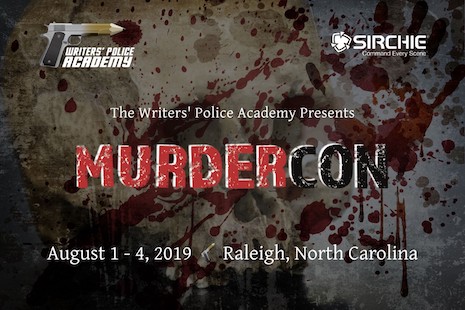
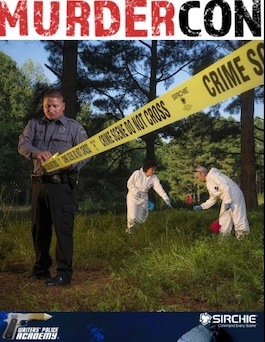
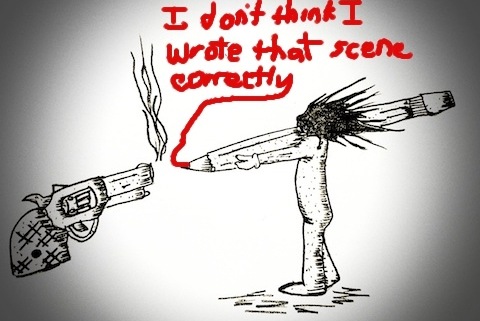

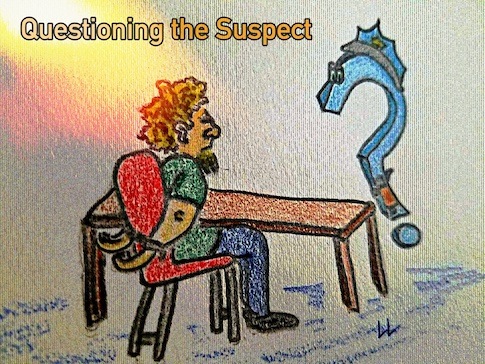 Q. Can anyone be trained to be an effective interrogator or are certain inherent personality traits and talents essential for success?
Q. Can anyone be trained to be an effective interrogator or are certain inherent personality traits and talents essential for success?




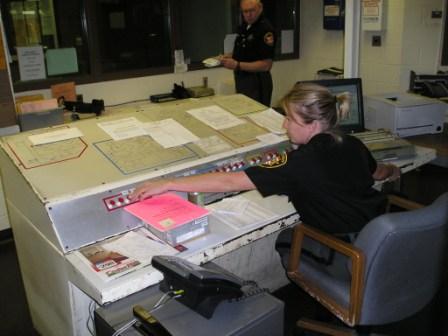













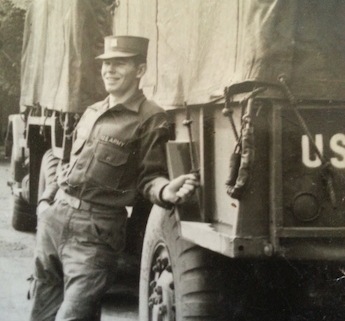

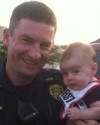 Officer Bradley Fox, 34
Officer Bradley Fox, 34